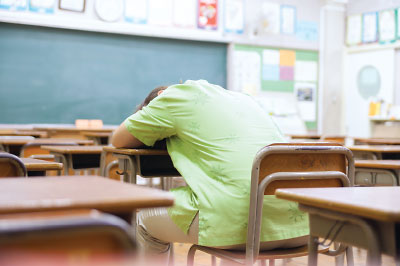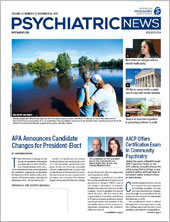On a typical school night, high school students who averaged less than six hours of sleep a night reported thinking of and attempting suicide far more often than their longer-sleeping peers, according to nationwide survey data. That finding has major public health repercussions since the data also indicated that more than 70 percent of high school students get less than the 8 to 10 hours of sleep they need for optimal mental and physical health.
Matthew Weaver, Ph.D., an associate epidemiologist at Brigham and Women’s Hospital in Boston, and colleagues analyzed data provided by 67,615 U.S. high school students who responded to Youth Risk Behavior Surveys (YRBS) of the Centers for Disease Control and Prevention (CDC) between February 2007 and May 2015. Respondents comprised a nationally representative sample of students enrolled in ninth to 12th grades in U.S. public and private schools. Nearly all were age 14 years or older. The students completed the anonymous surveys in their classrooms.
Weaver’s team categorized sleep duration on an average school night as 8 hours or more, 7 hours, 6 hours, or less than 6 hours. They then examined a variety of personal safety risk-taking behaviors individually and as composite categories. Their findings were published in the October JAMA Pediatrics.
They found shorter sleep duration was associated with increased odds of risk-taking behaviors in a dose-dependent manner. The fewer hours students said they slept on an average school night, the more likely they were to report having engaged in unsafe behaviors.
When compared with high school students who reported they averaged 8 hours or more of sleep a night, those who said they typically slept less than 6 hours were about twice as likely to say they used tobacco, alcohol, marijuana, or other drugs and had driven after drinking alcohol. They were nearly twice as likely to report they carried a gun or other weapon and had been involved in a physical fight. They also had higher rates of risky sexual activity, including sexual intercourse with four or more individuals and not using a method of birth control.
The strongest associations between short sleep duration and risk-taking behaviors involved mood and self-harm. Some 11,912 students—17.6 percent of the total survey respondents—reported averaging less than 6 hours of sleep on a typical school night. These students were more than three times as likely as those who slept 8 hours or more to report feeling sad and hopeless, seriously considering suicide, having made a plan to attempt suicide, or having attempted suicide. They were more than four times as likely to report having made a suicide attempt that required treatment.
Overall, more than 23,000 students—more than one-third of all respondents—reported they had experienced depressed moods and seriously considered or attempted suicide.
Among U.S. adolescents, suicide is second only to unintentional injury (chiefly involving motor vehicles) as the leading cause of death. In 2016, the most recent year for which the CDC provides statistics, 2,553 youths aged 10 to 19 years died of suicide in this country.
The cross-sectional design of the YRBS surveys “precludes examination of a bidirectional association, which may exist for some behaviors,” the researchers noted.
Weaver urges psychiatrists to ask adolescent patients about their sleep habits. Both insufficient and poor quality sleep are common in this age group, Weaver told Psychiatric News. “Educating adolescents about the importance of sleep and how to optimize sleep,” he said, “may benefit multiple aspects of their health.”
Weaver conducted the data analysis with colleagues at Harvard Medical School, the College of Nursing at New York University, and the School of Nursing at the University of Wisconsin-Madison.
The researchers plan to continue mining the YRBS data, Weaver said, to better understand the association between sleep, mood, and risk-taking behaviors. ■
An abstract of “Dose-Dependent Associations Between Sleep Duration and Unsafe Behaviors Among US High School Students” can be accessed
here.

